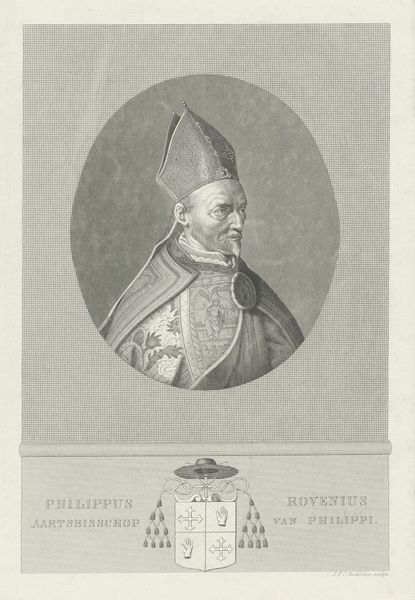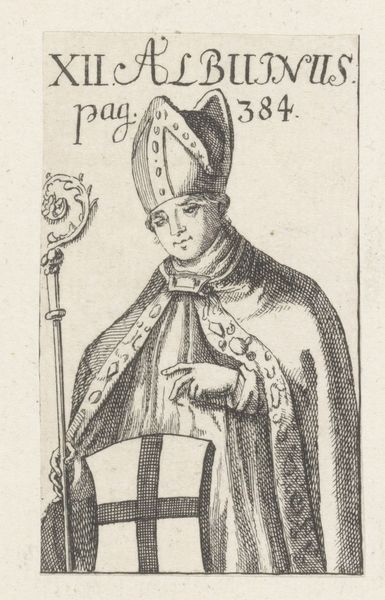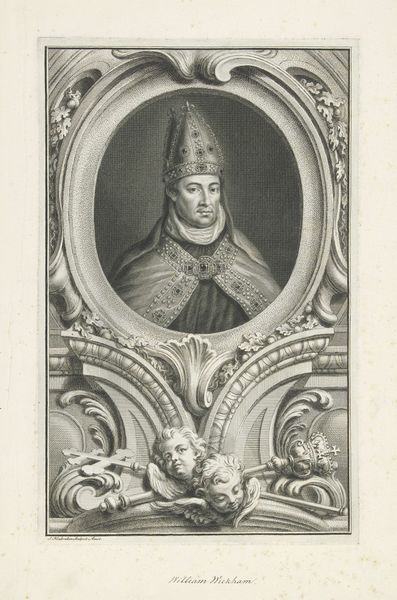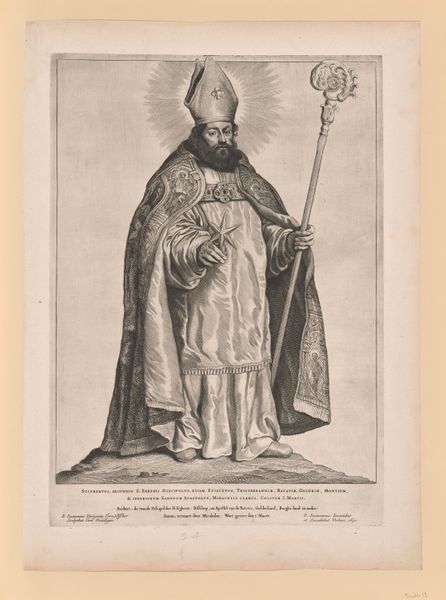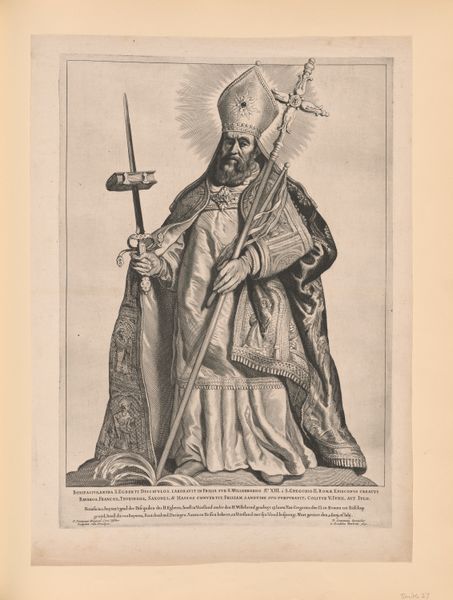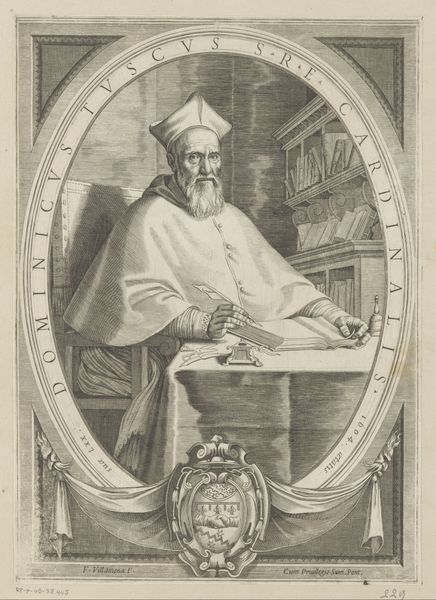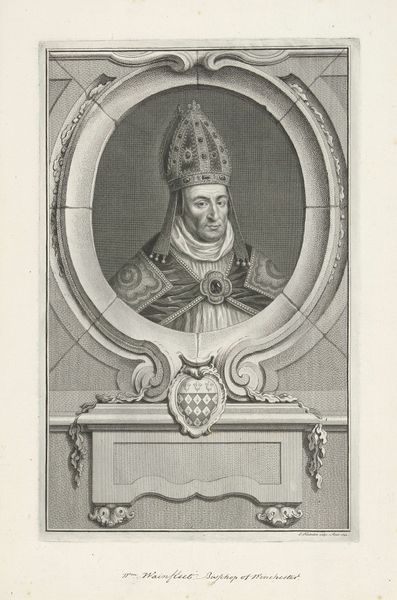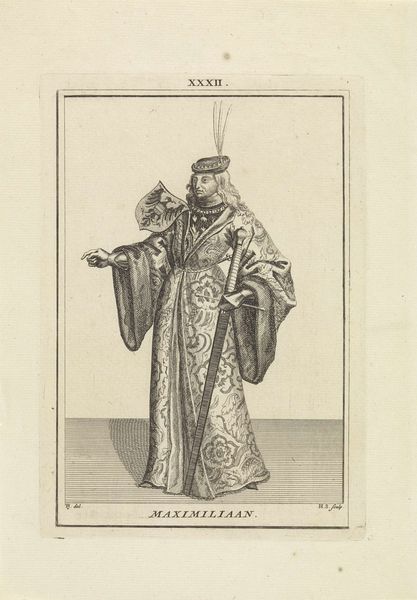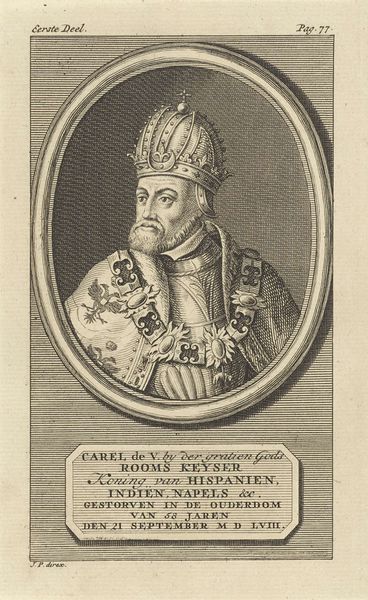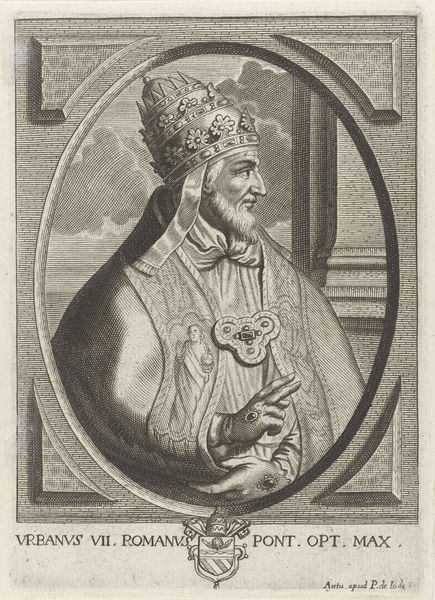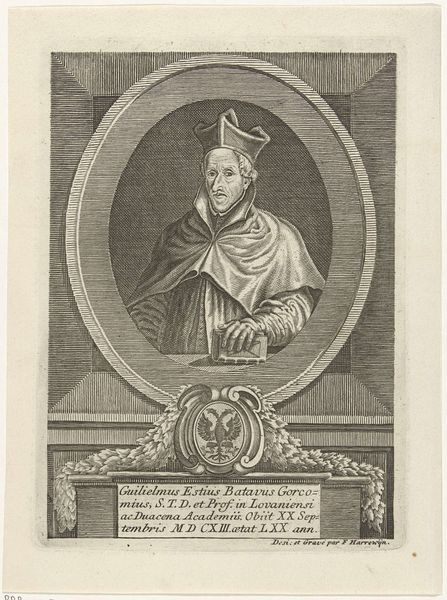
print, engraving
#
portrait
# print
#
classicism
#
history-painting
#
engraving
Dimensions: height 188 mm, width 155 mm
Copyright: Rijks Museum: Open Domain
Editor: Here we have a print from between 1800 and 1802, “Portrait of Pope Pius VII”, by Jan Gerritsz. Visser. It's quite detailed. The crosshatching creates a texture behind the figure that makes him pop out. I wonder, what do you notice first when you look at this portrait? Curator: I am immediately drawn to the compositional balance. The figure occupies the central space, with his hand raised in a gesture of benediction, creating a strong vertical axis. This is elegantly counterpointed by the horizontal emphasis of his papal robes, laden with intricate patterns. It’s a study in contrasts between the active and passive, wouldn’t you say? Editor: That’s a good point about the robe. Do you think its detailing is too busy, competing for attention with the Pope’s face? Curator: One must consider that in formal portraiture, detail is not merely ornamentation, but a symbolic language. The complex embroidery speaks to the authority and status of the subject. Observe, too, how the play of light and shadow across the engraving gives form and depth, emphasizing the texture of the clothing. This chiaroscuro is central to understanding the visual impact. Editor: I see what you mean about the symbolic weight now. Looking at the details really adds depth. Thanks for pointing that out! Curator: Precisely. By focusing on formal elements, one gains a deeper understanding of the intended message and its aesthetic realization.
Comments
No comments
Be the first to comment and join the conversation on the ultimate creative platform.
